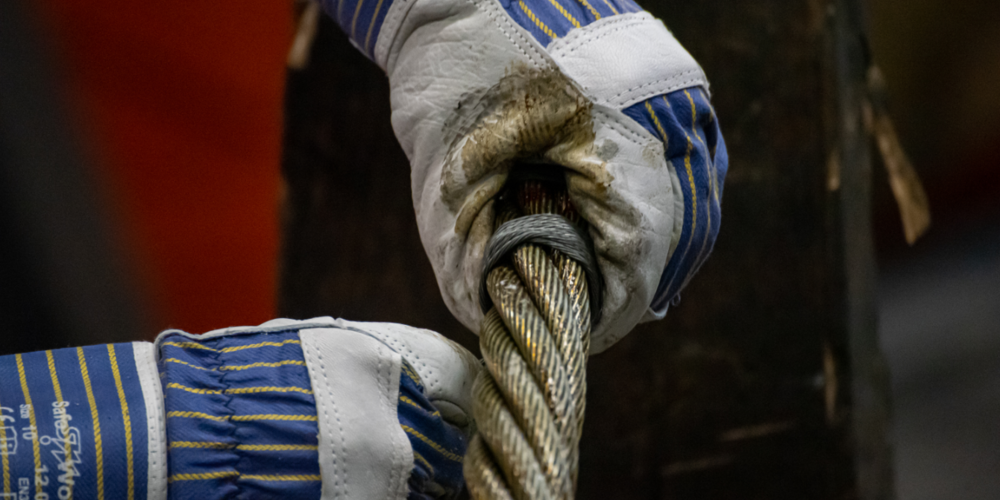
My steel wire rope broke spontaneously
In my role as a steel wire rope consultant at Mennens, I’m regularly called by organizations for help and advice. ‘Our wire rope broke spontaneously’ is often what they tell me. When I visit them to find out the cause, it usually turns out not to be so spontaneous after all.
Let me start with a reassurance: a steel wire rope never ‘just’ breaks. In my 25 years at Mennens, I have visited many different organizations in various sectors. And I have never seen a steel wire rope break spontaneously. There is always a clear cause.
Unintentional destruction
Approximately 80% of wire ropes break as a result of destruction: external influences and human failure. This is caused by ignorance, which isn’t strange. Steel wire ropes are literally and figuratively grey. There are so many different types of wire constructions that organizations and even constructors are often reeling: which steel wire rope is suitable for which application, environment and situation?
Steel wire rope scrapes against the bow of a ship
I came across a good example at a company in the shipping industry some time ago. The company was transferring bulk goods every day. The wire rope used for this was heavily damaged, so a request came in for me to come and visit. In the workshop, I quickly saw what went wrong. The steel wire rope had a high breaking load, but during unloading it repeatedly hit the ship’s bow and was damaged as a result.
Breaking load = no guarantee for a long life span
The breaking load of a steel wire rope determines the maximum lifting capacity of a rope. Many organizations focus solely on this: as long as the wire rope has a high breaking load, it will be okay. Nothing could be further from the truth. If the wire – as in this case – has thin outer wires and chafes against the bow of the ship every day, then the wire rope will wear faster and eventually break.
In this case, the company would’ve been better off choosing a steel wire rope with thick outer wires. Of course, it is always important that the steel wire rope does not chafe along fixed parts, as was the case here
Deflection angle
I also frequently notice that there is a deflection angle. Here’s the thing: to move loads or create a deceleration, steel wire ropes often move over sheaves and on drums. These sheaves are not always directly opposite each other. This is often structurally not possible. And if deceleration is required, the sheaves are not in line either. The result is that the cable reaches the sheave or drum at an angle. We call this a deflection angle.
Twisting
With a deflection angle, the wire rope hits the so-called “cheek” of the sheave, then rolls at the bottom of the sheave’s groove. This causes wear on both the wire rope and the sheave. A twist effect is also created in the wire rope. Twisting occurs during lifting and is a continuous process. During hoisting, twisting occurs in the opposite direction. You may think this solves the twisting problem. But that is not the case. The load on the wire rope is not the same when hoisting and lowering. Therefore, in the loaded situation, more twisting is built up than is removed in the unloaded situation. With every hoisting movement, there is still a twist in the wire rope. The result: a kink in the wire rope or a so-called cage formation.
A deflection angle is not always preventable, but it should certainly not be too large. The smaller the deflection angle, the better. There are standards for this. Yet I regularly see situations where the deflection angle far exceeds those standards. A shame, because it is easy to prevent. My advice: follow the standards and prevent a kink in the steel wire rope or a cage formation.
Let us advise you
These are just two examples of situations in which a steel wire rope breaks due to external influences. Obviously, there are many more aspects to consider. From diameter and construction to the method of striking, coating, breaking load and tensile strength. Are you involved in the assembly of a hoisting crane, structure or installation? My colleague Ayrton and I would love to advise you on the right steel wire rope and how to use it. Send me an e-mail or call me at 020 58 11 811.




